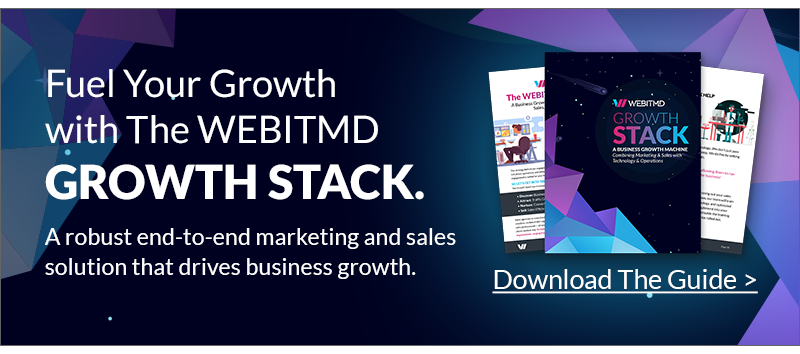While paid advertising and social media certainly make an impact in a marketing strategy, the value of organic traffic through SEO and building your email list cannot be ignored. Unfortunately, though, it often is. Smaller companies are desperate to meet goals, and so they buy contact lists and then wonder why the conversions aren’t coming through.
An audience who isn’t ready to hear your message won’t respond. Expect bounces, spam reports, and dings on your domain. Boo.
Email is one of the most sensitive channels that you as a digital marketer have at your disposal. You have to be careful about when, what, and who you email. We highly recommend you resist the temptation to purchase email lists and, instead, develop a strategy around growing your email list through organic channels. Here’s why:
The Value of Building Your Email List
- Higher delivery and open rates
- Higher conversions
- Lessens legal risk
- Maintains sender reputation
- Better ROI
Higher Delivery and Open Rates
An engaged audience is one you’ll experience more success with during your email campaigns. This more accurately shows you what’s working vs. what isn’t in your emails – whereas a scraped list won’t give you an accurate read on how well your campaign will perform.
As they say, reaching the right audience at the right time will give you the best results. Without an engaged list that voluntarily opts in to hear from you, you’re foregoing all the time and effort you invested into your campaign. Even if it’s the best email ever written, it will be useless without the proper contacts to send it out to.
Higher Conversions
Building on the right audience, right time analogy, you’ll gain more customers by sending qualified email lists. This qualified audience will lead to higher open rates and interactions with your email. Since email is one of the best tools for gaining a return on investment, it’s also the most cost-effective. And most popular, as email is still an incredibly popular medium to reach people of all ages.
Conversions are just one of many stats you’ll use to verify the success of your campaign, but it’s a vital part of seeing how healthy your list is and gauging the level of drop-offs or leads that have gone cold. Those contacts who are nurtured organically – through workflows and other welcome emails – are much less likely to do so if they’re in need of a solution that you provide effectively.
Lessens Legal Risk
By buying email lists, you run the risk of scraping emails worldwide and possibly breaching other country’s opt-in laws. It’s really important for European and UK-based email addresses that your communications follow general data protection regulation (GDPR) laws – even if they were created before it was established. GDPR basically means your contact must give consent freely to receive communication from you, and you must store this proof of consent.
With an organic email list, you’re able to vet contacts and audit them on an ongoing basis, minimizing your risk of breaching compliance.
Maintain Sender Reputation
Repeat sends to inactive email addresses, or even ones who didn’t actively opt in, will hurt your domain’s reputation. That’s because those contacts, if they even still use those emails, will likely report your content as spam – creating filtering and increasing the likelihood your communications will go to inactive folders. That’s hardly the first impression you want someone who was previously unaware of your brand to get, either.
Engaged contacts – gained through your team’s hard work and dedication to creating great content – will reap far better rewards and interaction on your campaigns.
Better ROI
None of us are out here creating emails without an intent or goal behind it. You want people to engage, resonate, and buy, of course! Having catered emails that meet people exactly at the point in their buyer’s journey with you – whether that’s a welcome email or abandoned cart send – is designed to boost conversions and purchase behavior.
Concentrating your efforts around a targeted list means you’re working smarter, not harder.
Best Practices for Building Your Email List
- Offer opt-in opportunities on your website through CTAs and other pop-ups
- Add a checkbox to subscribe anytime someone fills out a form (as a best practice, be sure they choose to check the checkbox themselves, and don’t pre-fill it in!)
- Include a subscription option for existing customers, or after someone buys from you
- Send regular communication regarding any sales, and offer coupons or exclusive deals to email subscribers
- Personalize your email subject lines and headers – as relevant emails drive 18x more revenue than broadcast emails according to Juniper Research.
Growing your email database is a vital part of any marketing strategy, as it’s a cost-effective option to stay engaged with your opted-in leads, prospects, and customers. If you’d like to learn more about how to build email lists through effective content and resources, subscribe to us here and download your free guide below.








(1).jpg)

.jpg)



![5 Reports to Elevate Your HubSpot Sales Dashboard [+ Examples]](https://2363531.fs1.hubspotusercontent-na1.net/hub/2363531/hubfs/Imported_Blog_Media/6-winning-examples-of-a-hubspot-sales-dashboard-2.png?width=767&name=6-winning-examples-of-a-hubspot-sales-dashboard-2.png)

